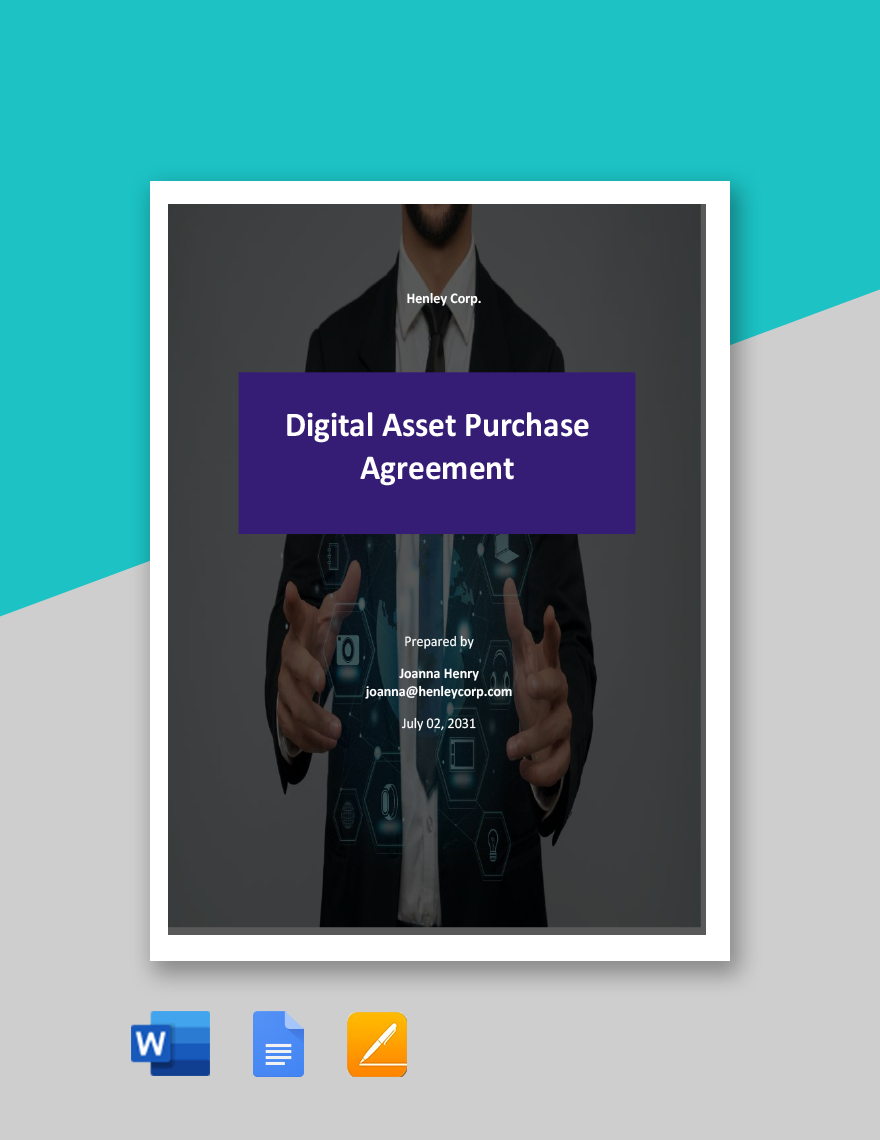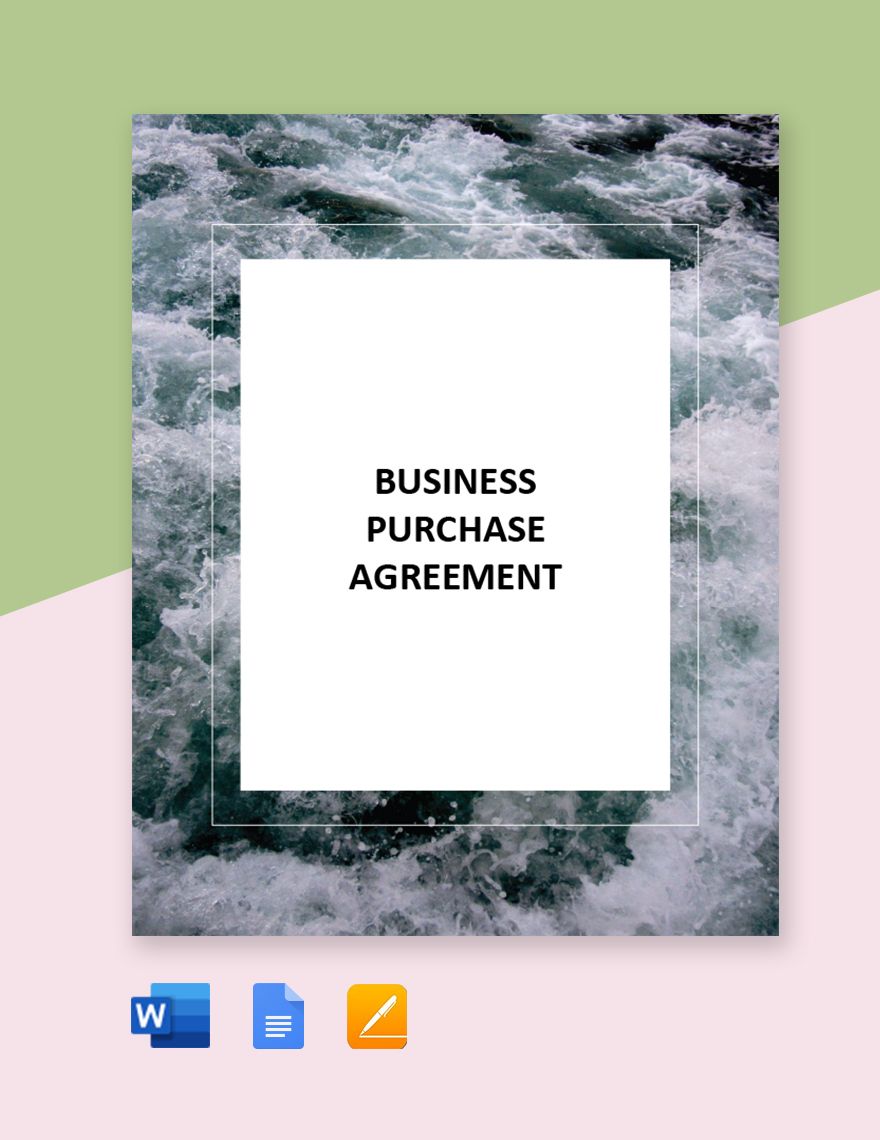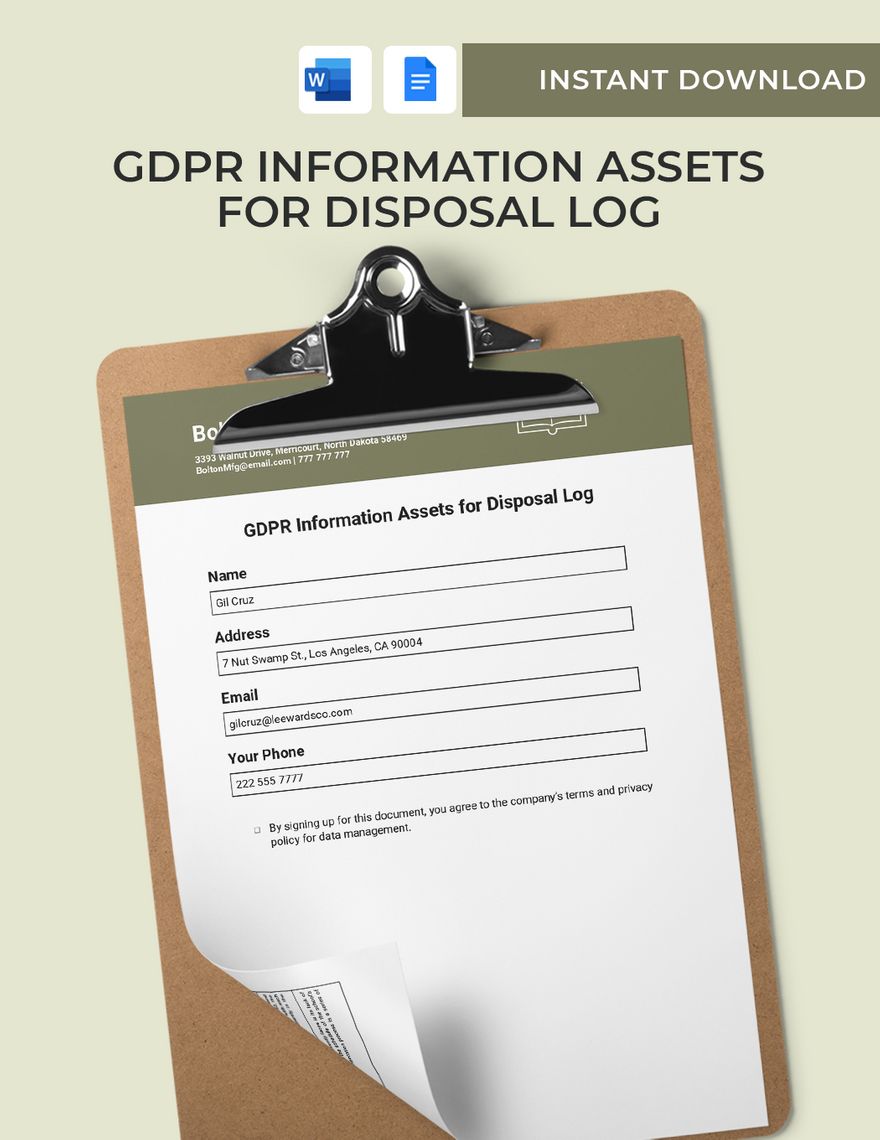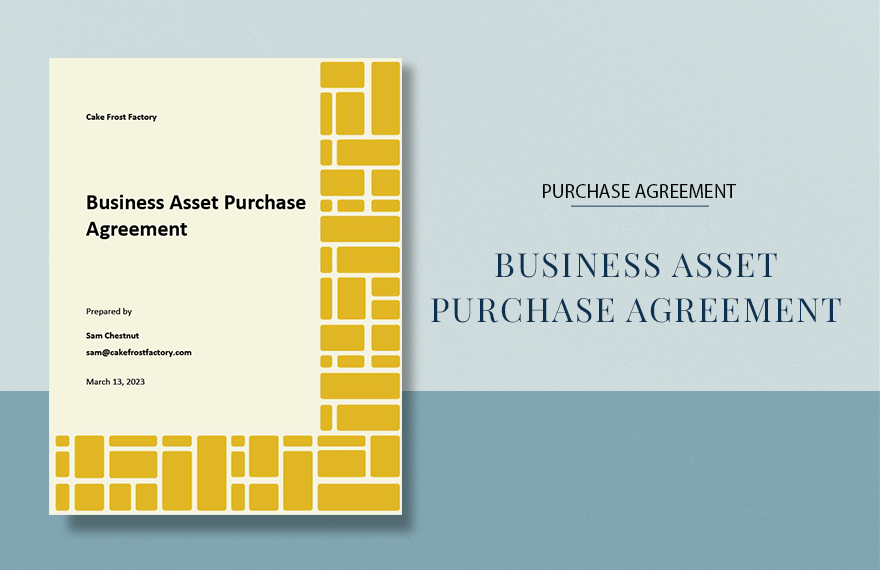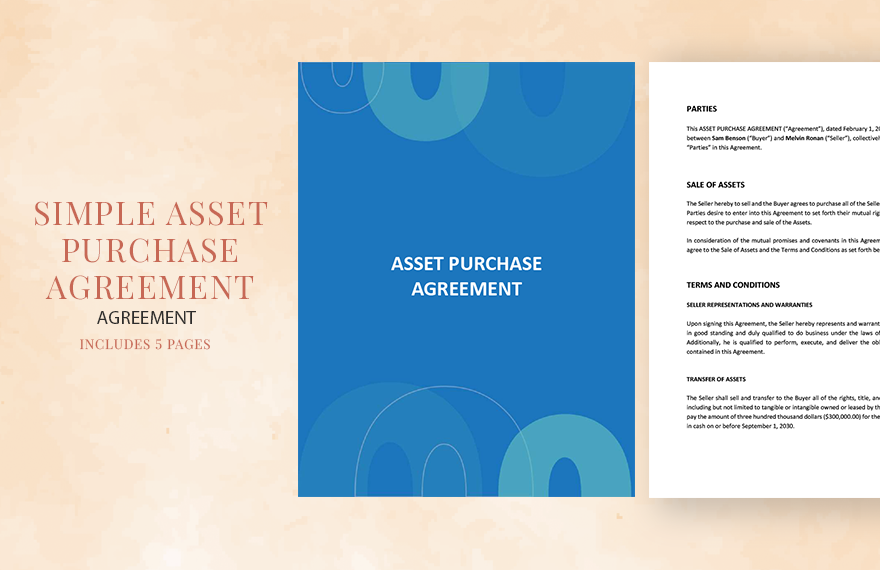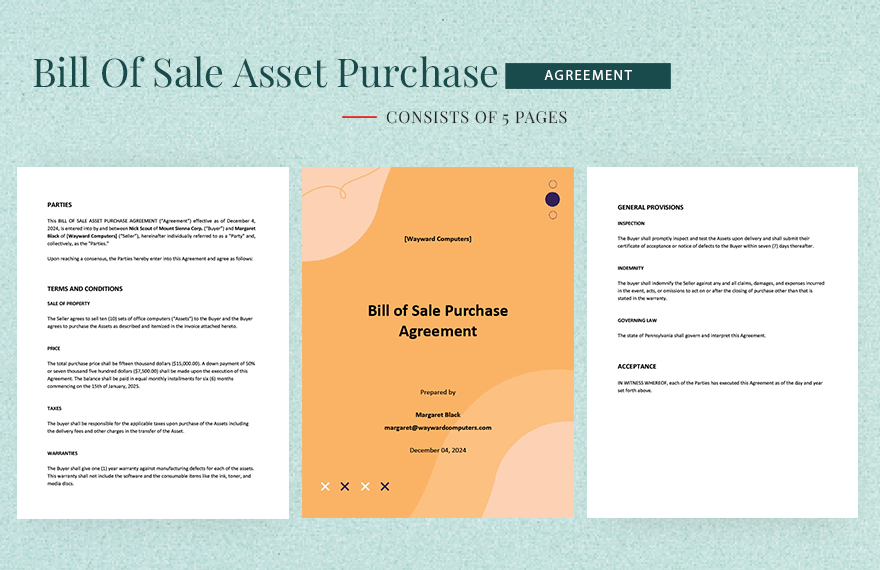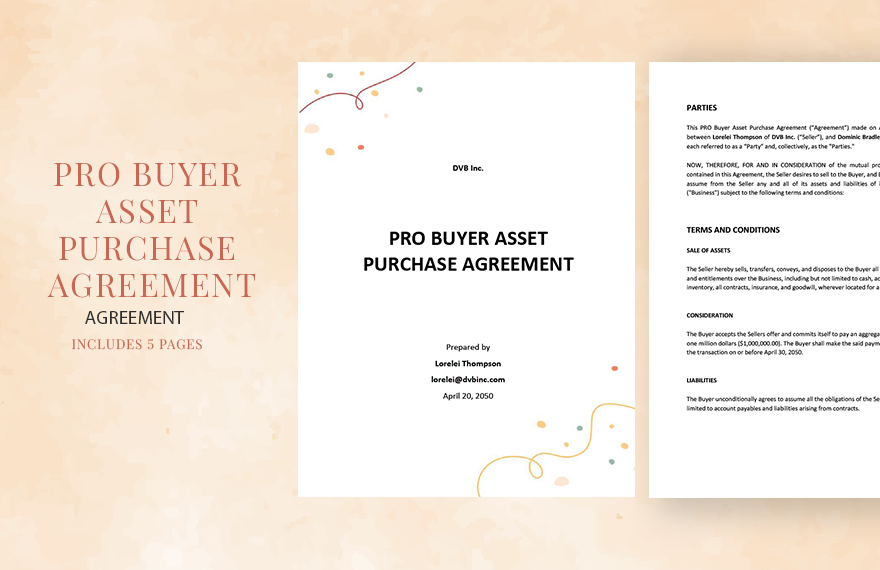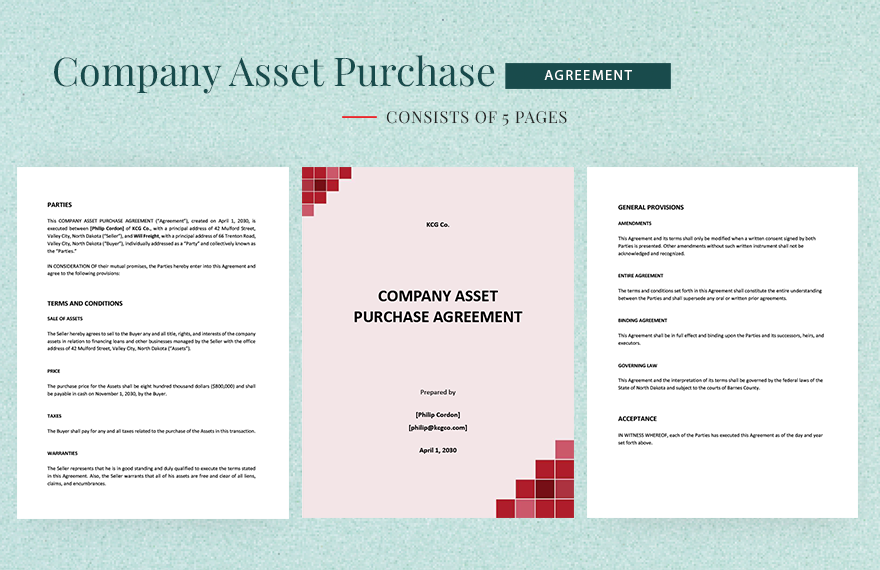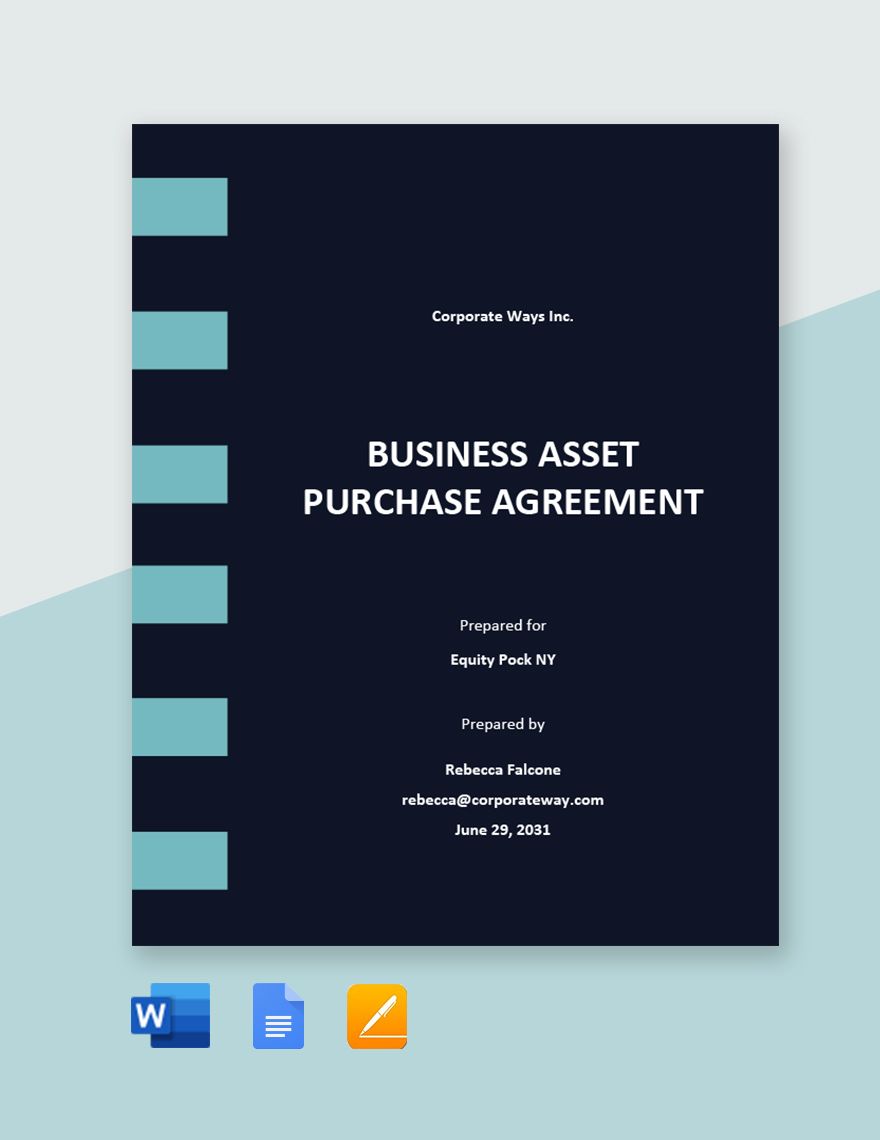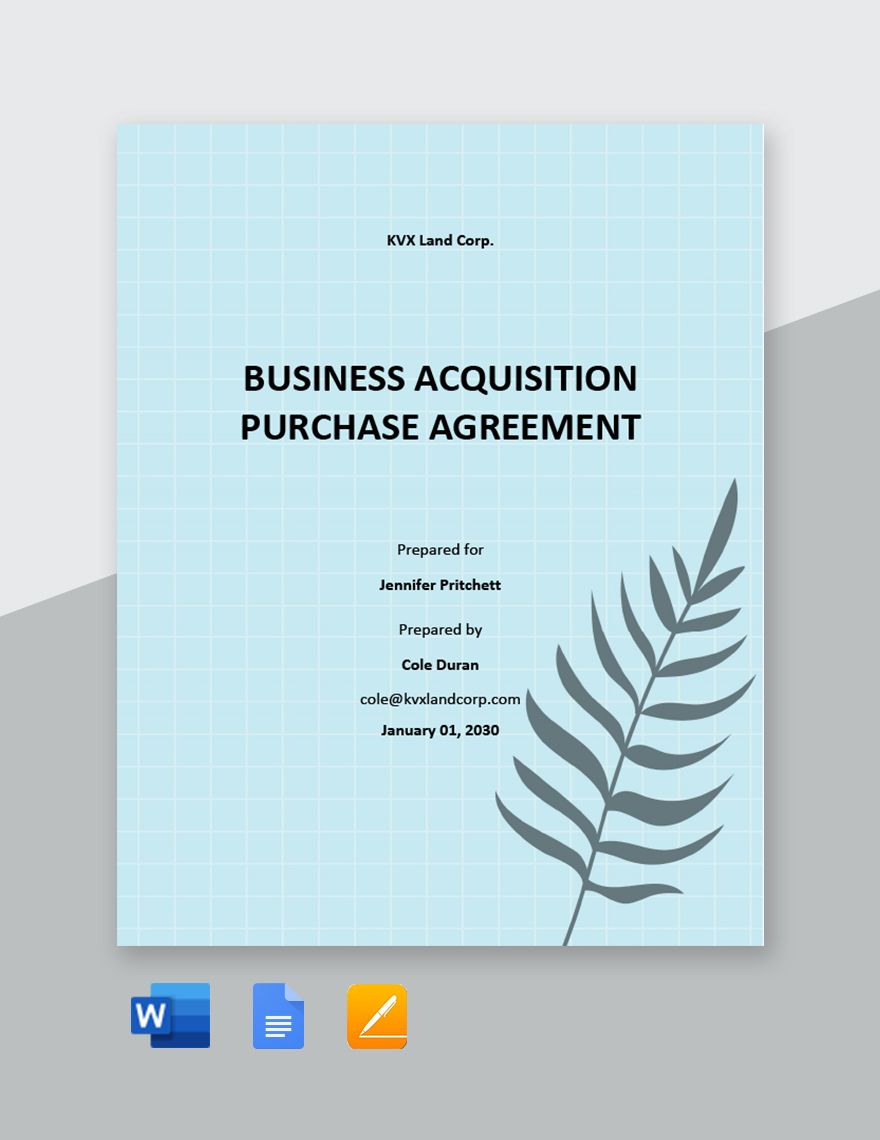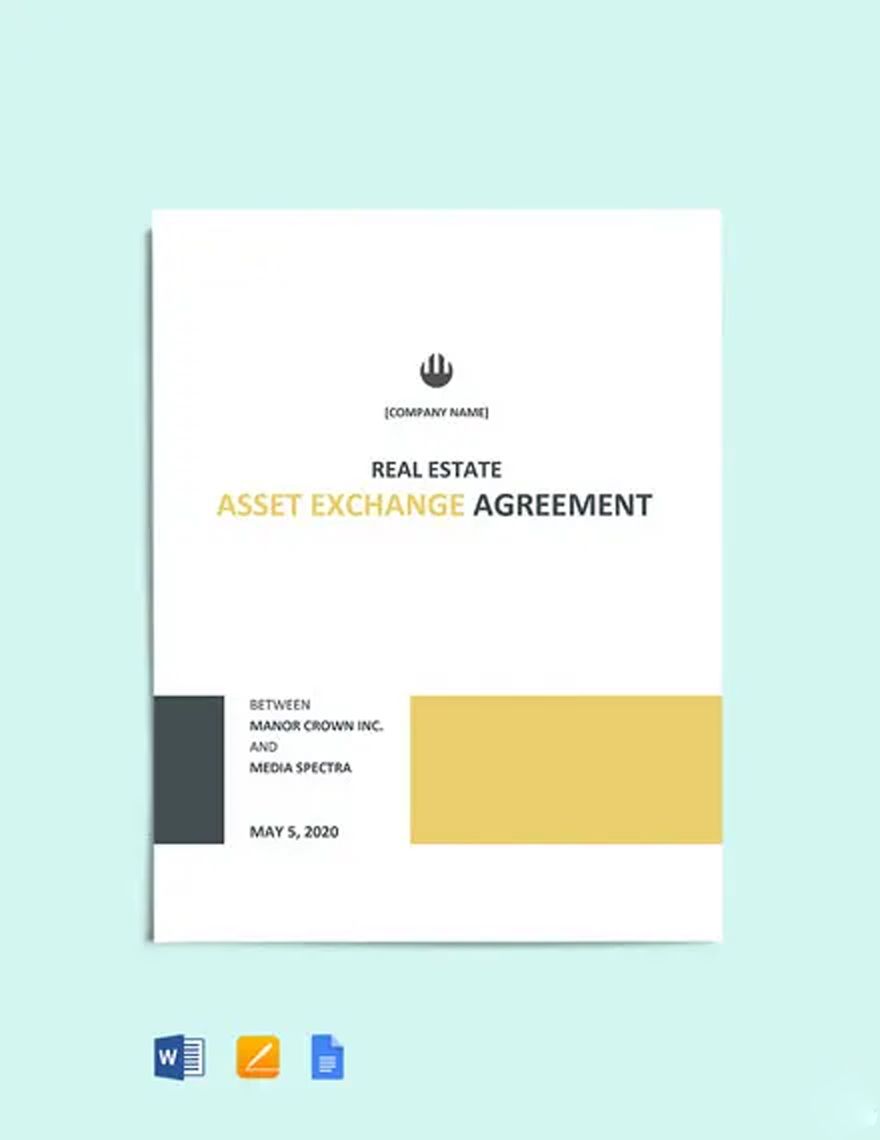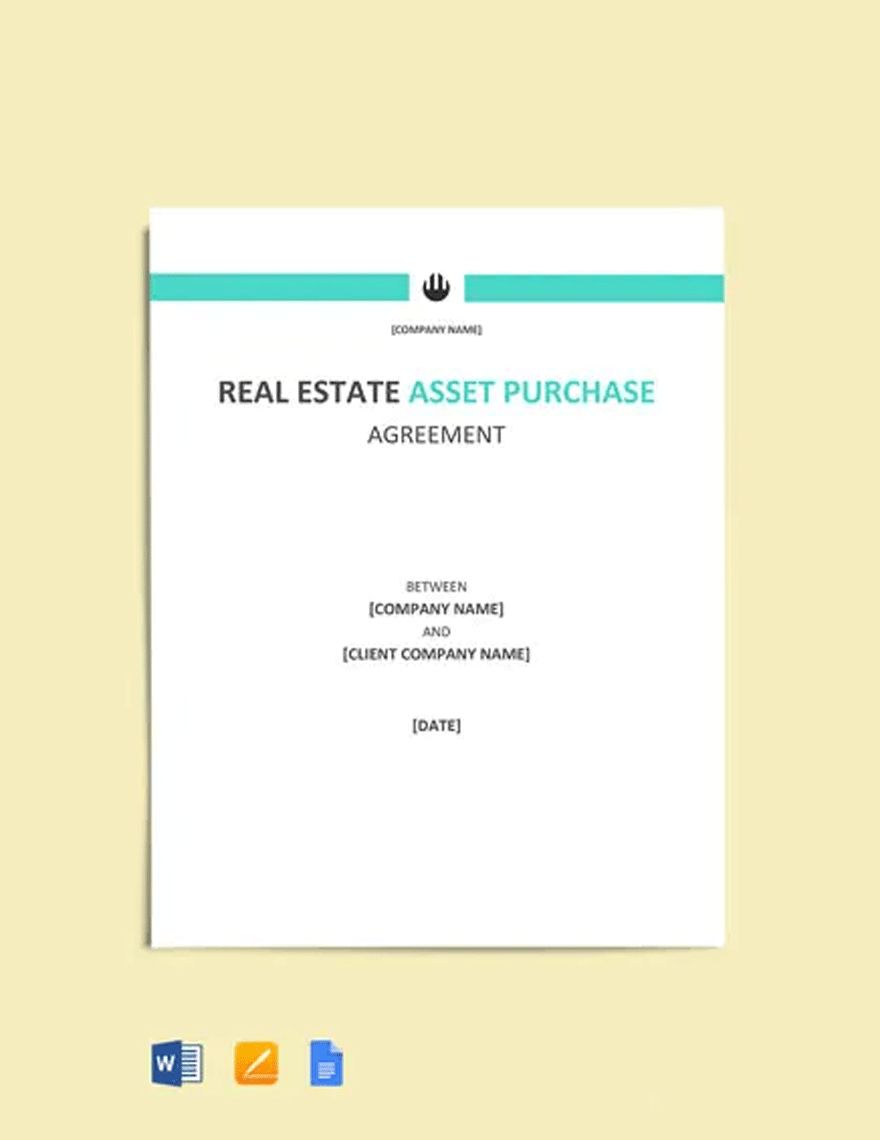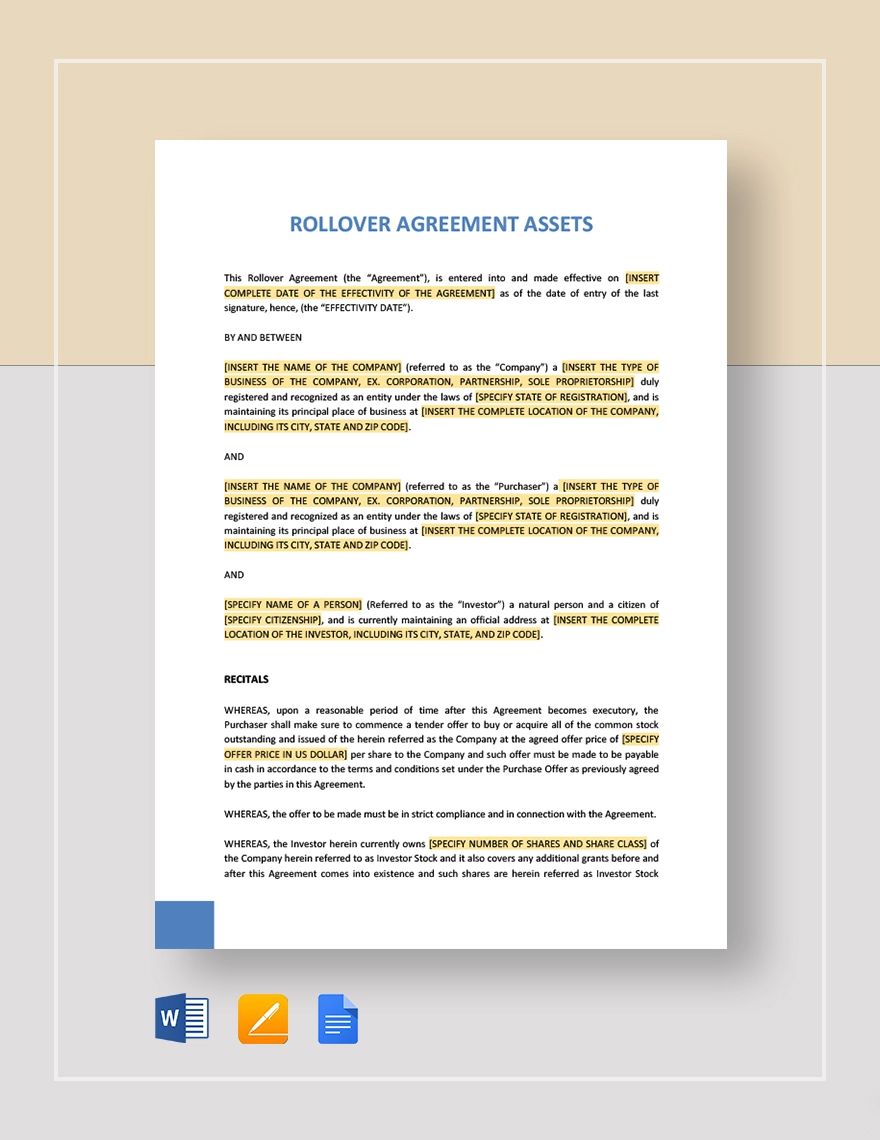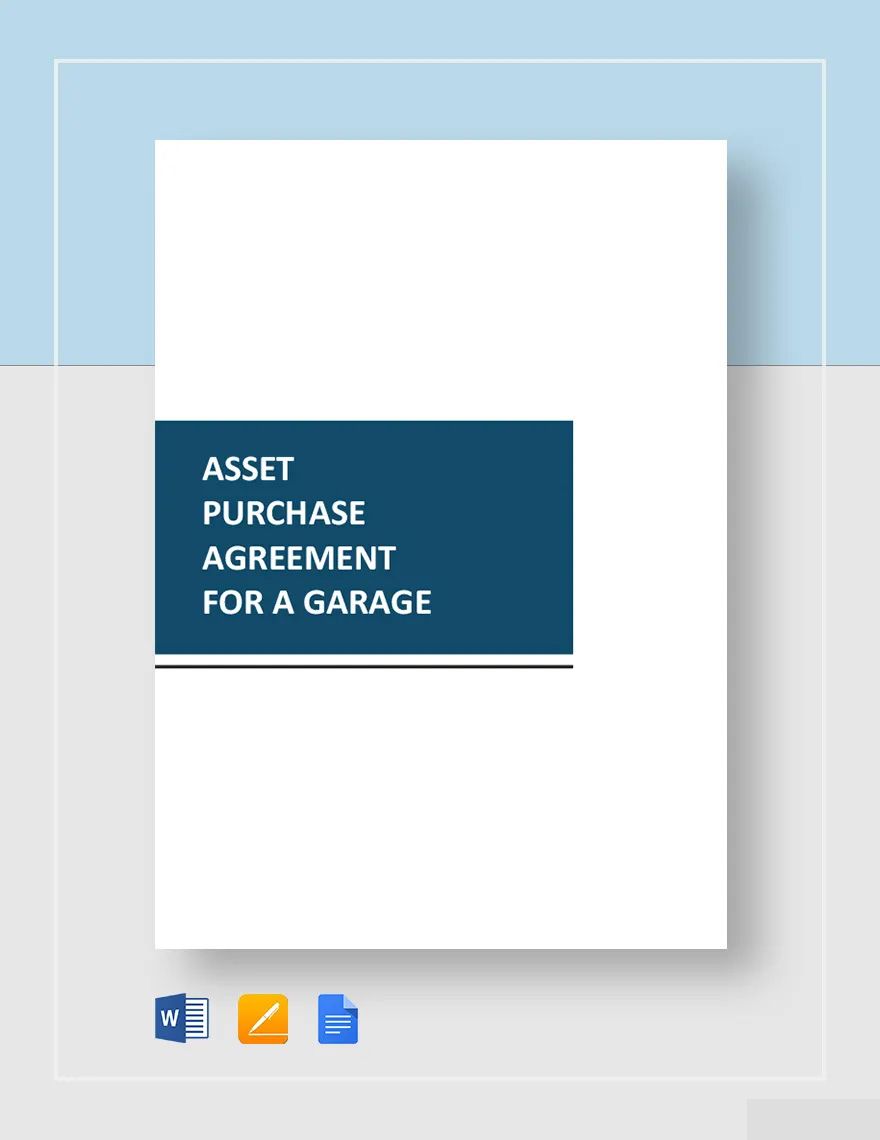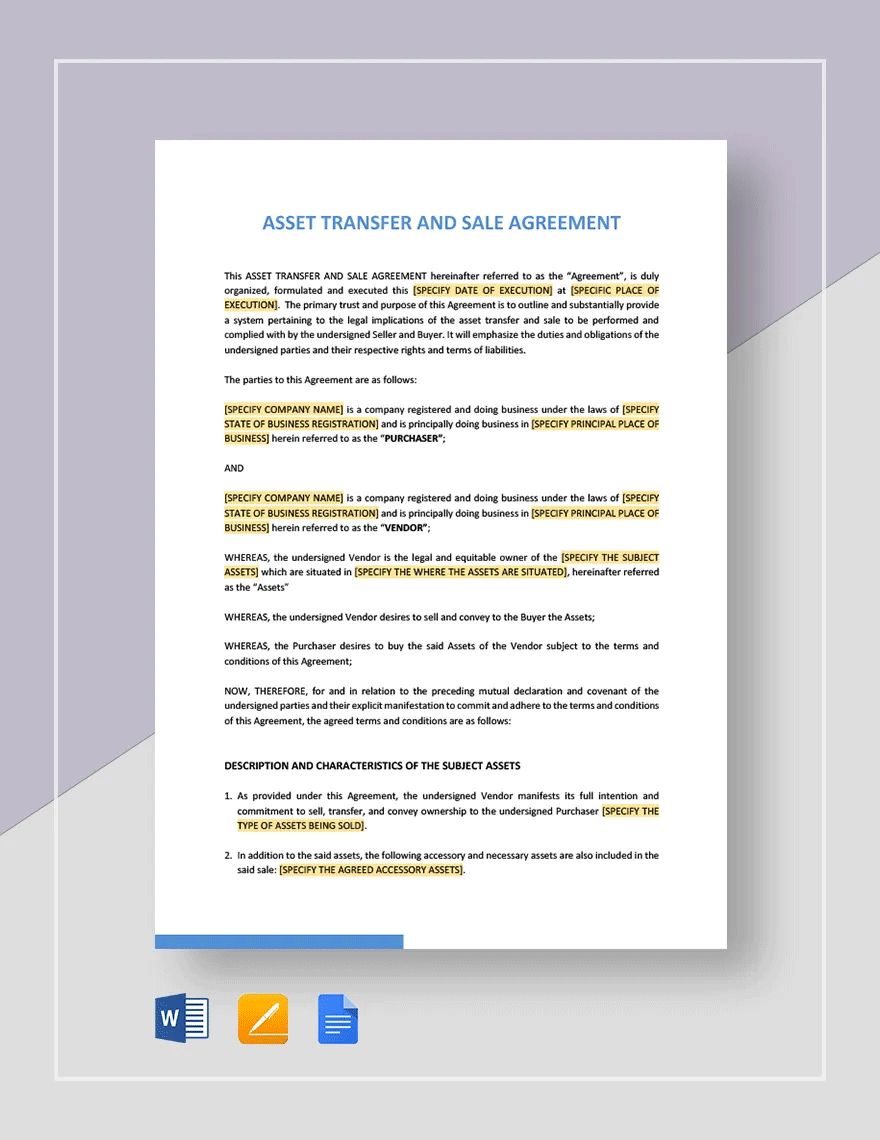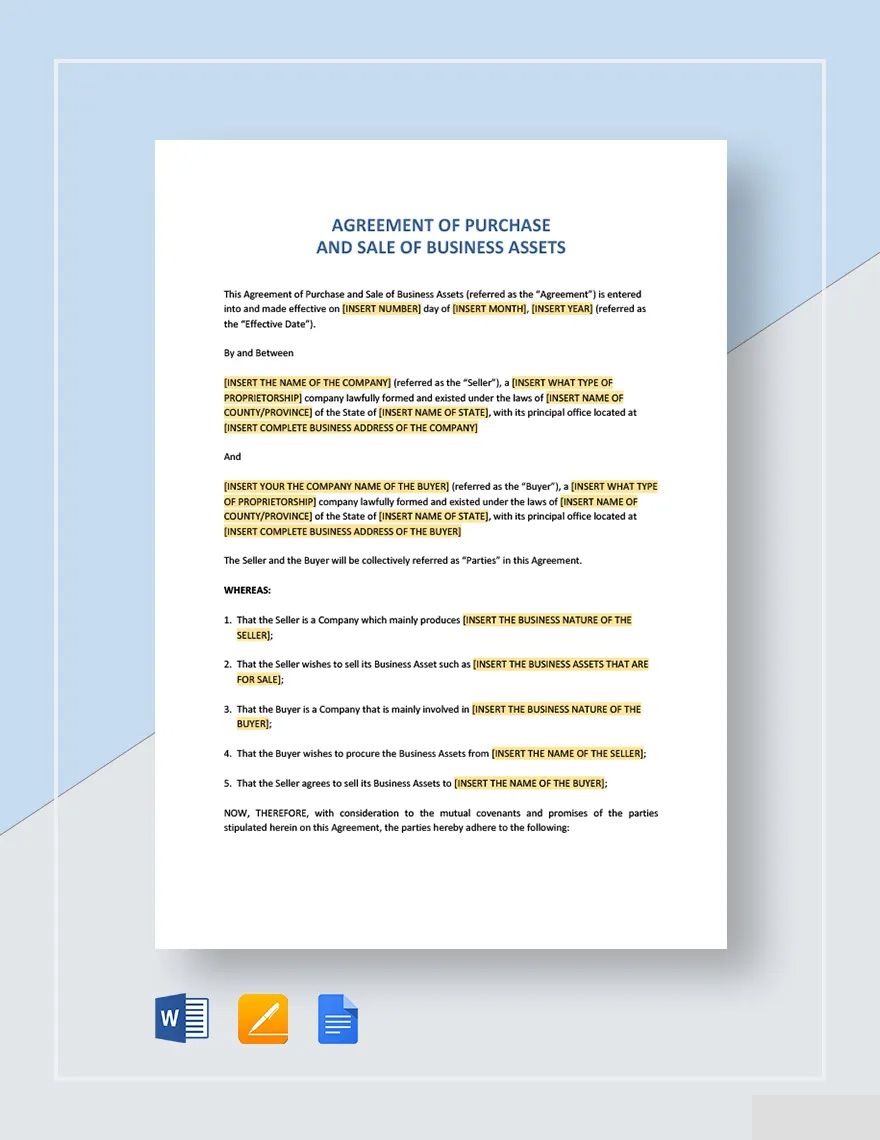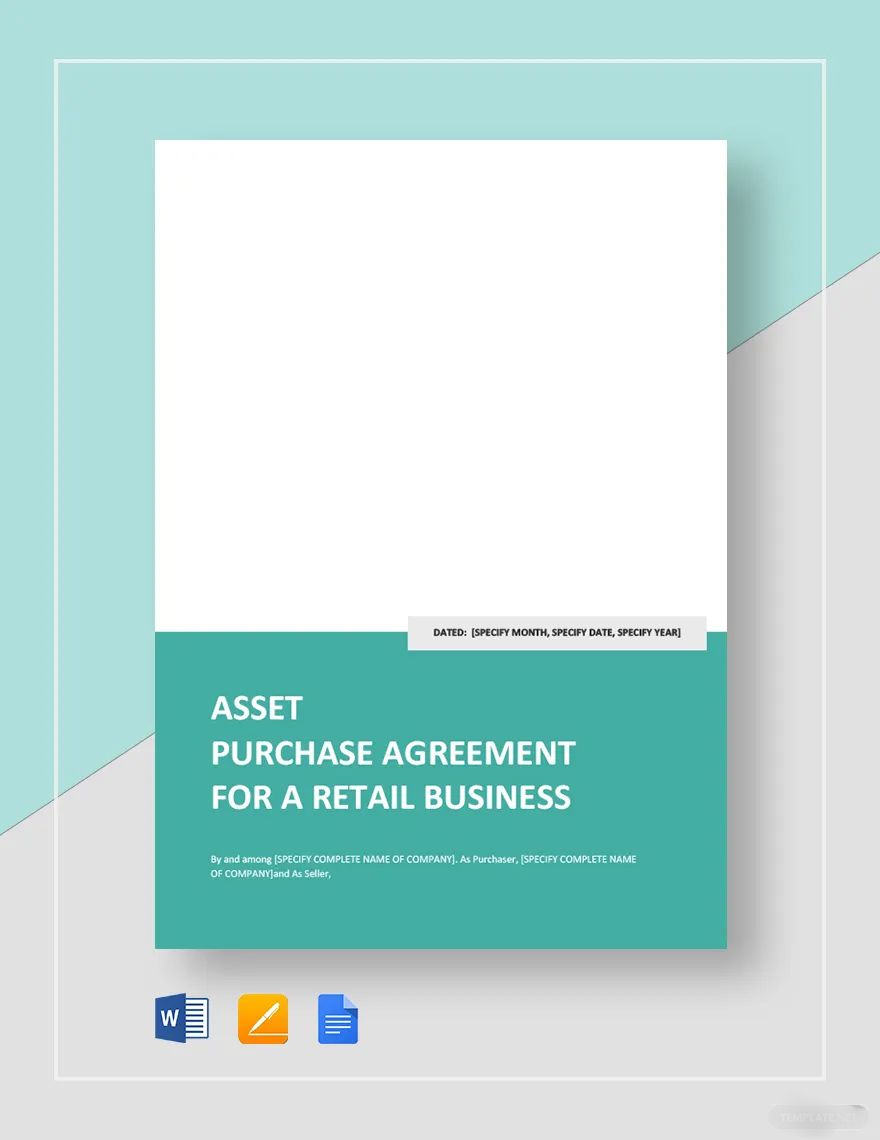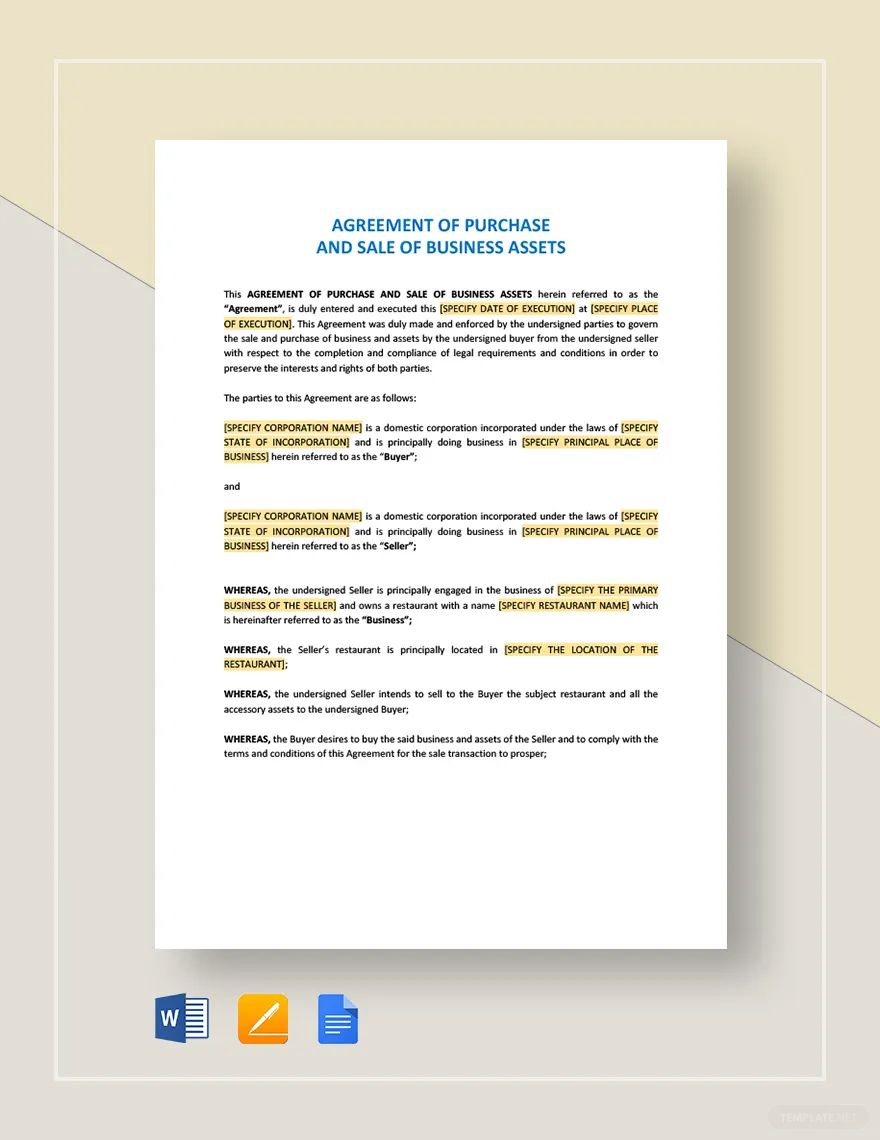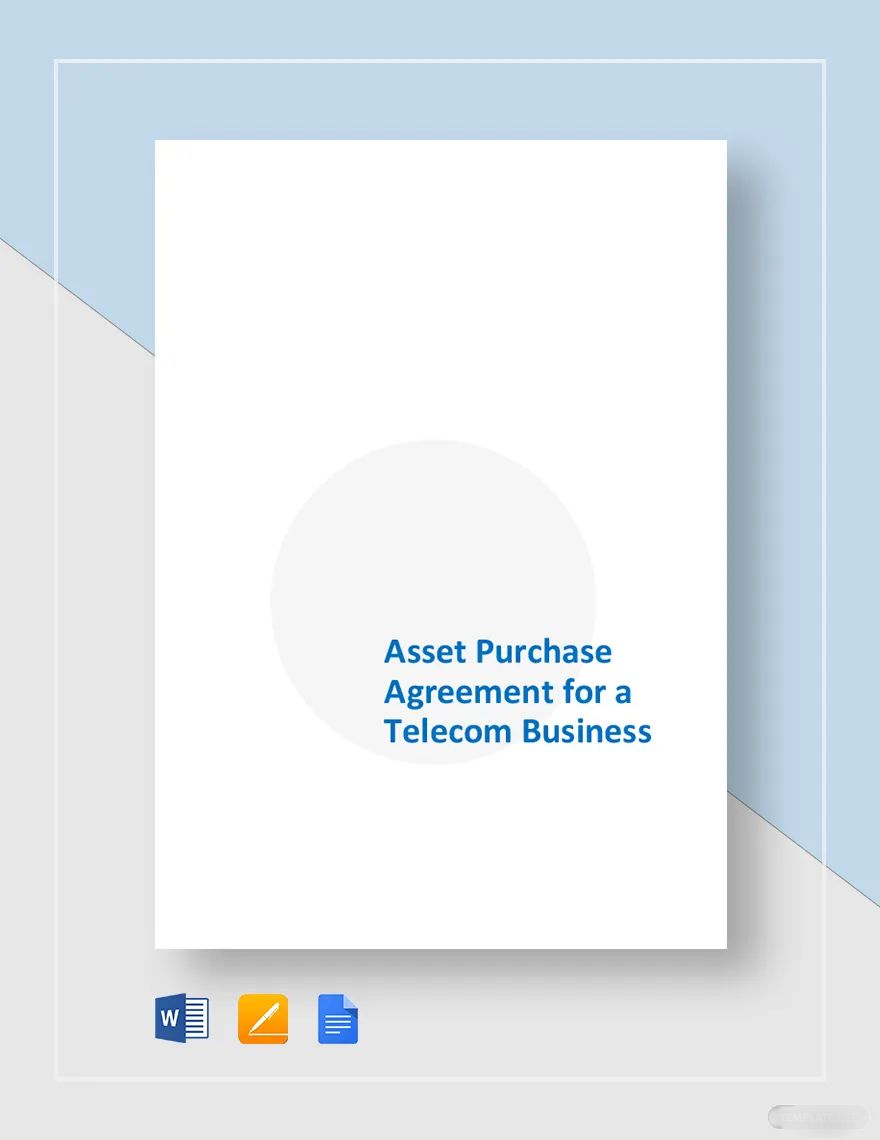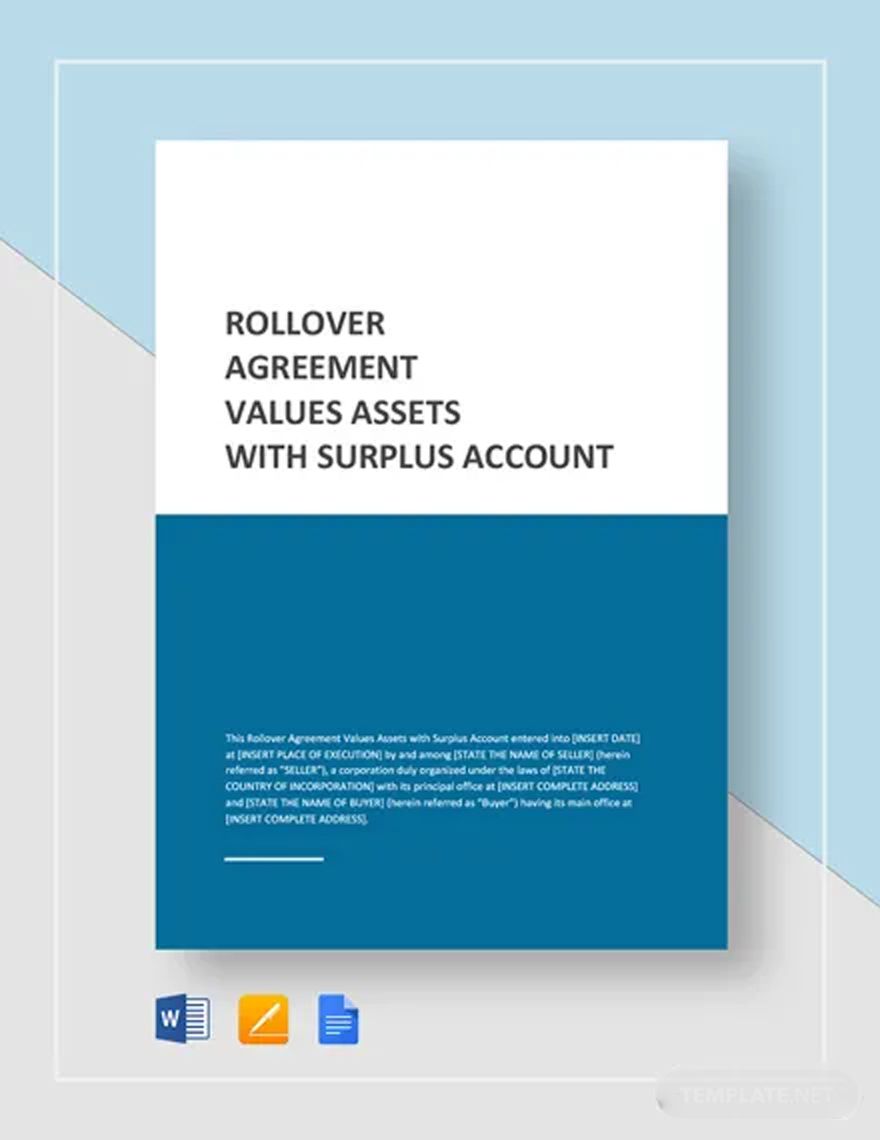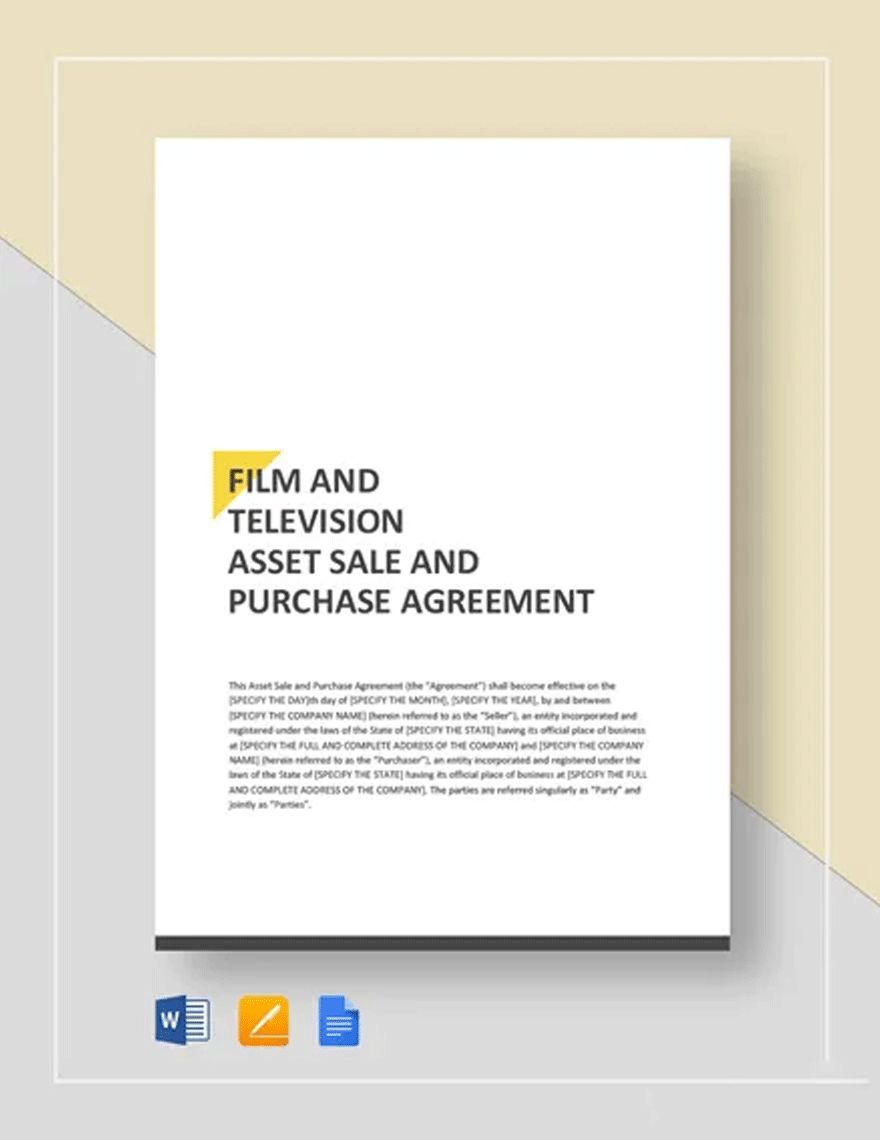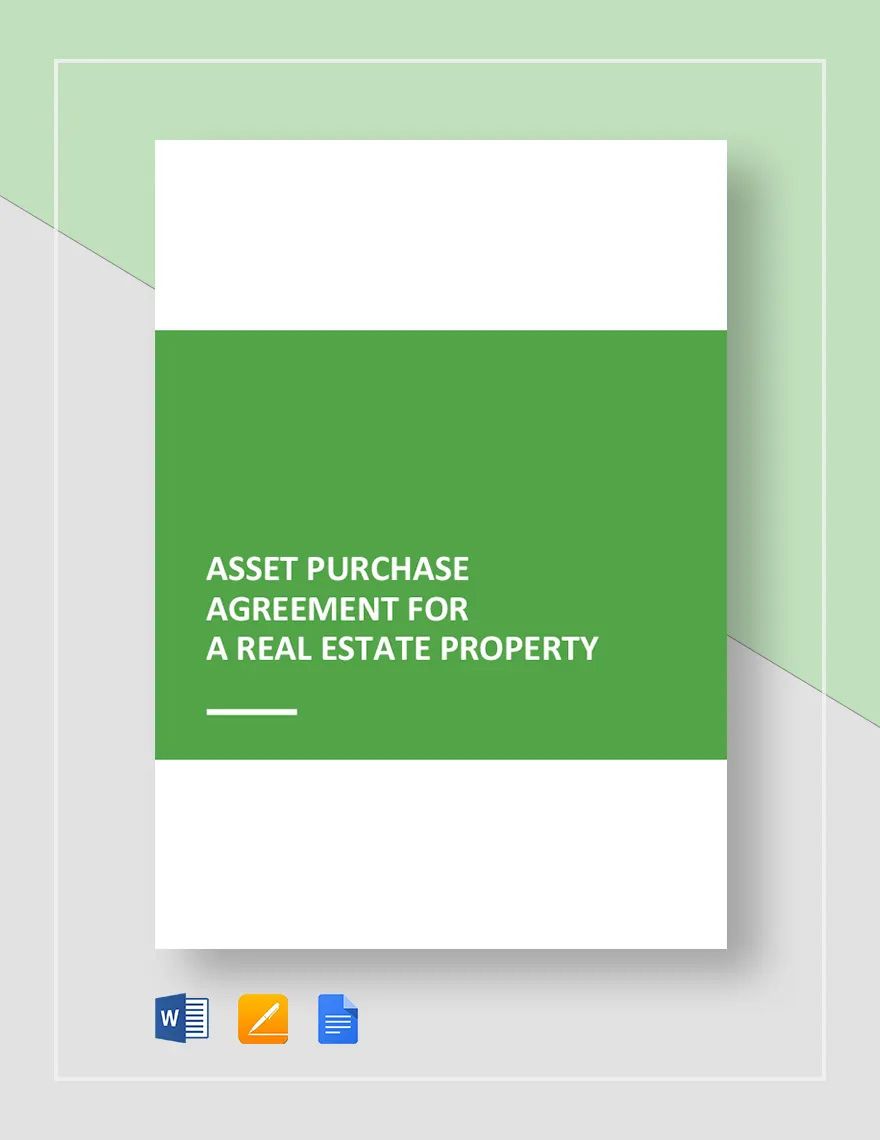Ensure that the asset transfer is safe from any legal issues by creating a well-written Asset Agreement Templates. With this, you can regulate the transactions involved in the purchase and sale of all intellectual properties. Luckily, Template.net has easily editable and fully printable templates to help you create one quickly without having to start from scratch. All you need to do is to buy a subscription plan, download a template, and start working on the agreement. The best thing about these templates is that they're 100% customizable and can be downloaded anytime and anywhere. So what are you waiting for? Gain exclusive access by buying a subscription now.
What Is an Asset Agreement?
An asset purchase agreement, or simply an asset agreement, is a legal document that regulates and finalizes the terms and conditions involved in selling and buying assets. This document typically discusses matters related to asset transfers such as the description of the assets for sale, the prices, and the parties involved.
How to Create an Asset Agreement?
Are you planning to do a closing sale? Or what about a regular sale just to update your inventory? If so, then you may need to come up with an asset agreement to settle terms and prevent issues from arising. Refer to the guidelines below to learn how to make a well-written asset agreement.
1. Discuss terms with the other party
Before you can even start drafting your asset purchase agreement, it is a must to meet with the other party and discuss terms with them. This way, you can inform the other party what you want and also hear what the other party wants, and both of you can agree on these by meeting halfway. During this meeting, you can take down notes to remember the terms that were agreed upon.
2. Make an offer and negotiate with the other party
Initiating a negotiation is important since it enables you to talk about what you can offer to the other party and vice versa. By offer, we are actually referring to the amount of pay that will be given in exchange for the intellectual property. An example of a successful negotiation involves a reasonable payment for the purchase of something that's considered worth the price.
3. Outline the asset agreement
Just before encoding your sales agreement on a word processor, you should first write an outline version of it. Assuming you have taken down notes during your meeting with the other party, you can refer to those details to build and organize your content meaningfully. In this order, your content should talk about the nature of the agreement, deadlines (if applicable), terms of payment, the start and end of the agreement, and other relevant information.
4. Provide a draft for the other party
By using a word processing application of your choice, you can start encoding your asset agreement and use the simple outline version as your reference. Afterward, it is a must that you provide a copy of the encoded agreement to the other party for reviewing and approval. You may want to provide them with a printable soft copy or an already printed sample of the asset agreement.
5. Make revisions, if both parties agree
After presenting your draft to the other party, there may be instances wherein they would ask for certain revisions to the content. If this happens, try to clarify things first before actually making revisions to the content, you should both be in agreement with these changes. However, if their request contradicts with what you have agreed in the previous step, simply show them the notes that you've written.
6. Finalize your asset agreement
And finally, you can start finalizing your asset agreement's content if there are no other revisions that need to be considered. Again, your simple agreement should be saved in a printable and versatile file format such as PDF if in case you choose to have it printed someplace else. Lastly, you and a representative whose name is indicated on the agreement should affix your respective signatures.
